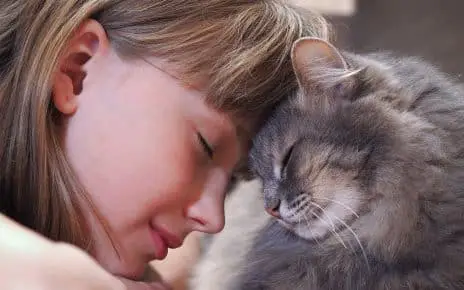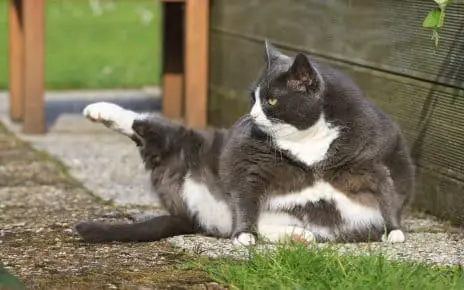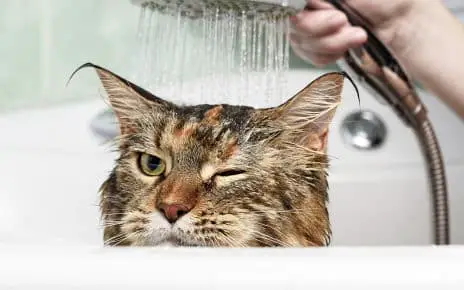All cat lovers know that what we consider as a decorative houseplant can easily double-duty as a quick snack for your feline friend. But allowing your kitty to just munch on whatever plant he or she sees in and around your home can lead to poisoning since some of these common plants have toxins that are very dangerous to cats.
Here is a list of the common plants that are poisonous to felines so you can be sure your kitty stays as safe as possible ? even when he or she is feeling a bit peckish:
Poisonous Plants for Cats #1: Sago Palm (Cycas revoluta)
 The Sago Palm is considered by interior designers as a great pick when it comes to pulling off an Asian-themed landscape, but this plant also contains very high levels of toxins that can set off very serious digestive issues if ingested by felines.
The Sago Palm is considered by interior designers as a great pick when it comes to pulling off an Asian-themed landscape, but this plant also contains very high levels of toxins that can set off very serious digestive issues if ingested by felines.
What makes the Sago Palm toxic to cats is the neurotoxic glycoside called Cycasin, which is concentrated in every part of the plant, namely the seeds, pods, roots, trunks and leaves. Depending on the amount consumed, it can trigger a sudden loss of appetite to severe liver damage.
Experts also warn that the frequent ingestion of Sago Palm can also lead to cancer not just in cats, but also in other mammals, including dogs, horses, cattle, sheep and even humans.
Poisonous Plants for Cats #2: Chrysanthemum (Chrysanthemum spp.)
 Chrysanthemums are prized for their striking multi-petaled blooms that come in lavender, orange red, yellow, white and a number of other shades. These plants are generally admired for their aesthetics, which can easily tempt your pet feline into thinking they’re dinner.
Chrysanthemums are prized for their striking multi-petaled blooms that come in lavender, orange red, yellow, white and a number of other shades. These plants are generally admired for their aesthetics, which can easily tempt your pet feline into thinking they’re dinner.
The only problem is chrysanthemums contain significant amounts of toxic compounds that are used to make pyrethrum, a highly potent pesticide, which controls the proliferation of caterpillars, aphids and cutworms.
Although the effects of these compounds are not fatal in felines, they can still set off skin rashes, convulsions, vomiting, diarrhea and asthma. Some cats can also display a considerable loss of coordination and hyper-salivation when they get in contact with these toxic compounds.
Unlike what most people mistakenly think, the leaves and stems of the chrysanthemum are also highly poisonous for your pet kitty besides the petals.
Poisonous Plants for Cats #3: Daffodil (Narcissus spp.)
 Sure, the sight of daffodils may give you the feeling of cheeriness, but you should feel a bit concerned if your pet cat is eyeing these plants with a hungry look since they can give your feline a nasty case of poisoning.
Sure, the sight of daffodils may give you the feeling of cheeriness, but you should feel a bit concerned if your pet cat is eyeing these plants with a hungry look since they can give your feline a nasty case of poisoning.
Daffodils, which are also commonly called Paper Whites, Jonquils and Narcissus, contain very high levels of the toxic crystalline, lycorine, a type of alkaloid that transforms into a poison when it gets metabolized by your pet’s system.
Aside from immediately setting off a dip in blood pressure, excessive drooling, seizures, bouts of shivering and digestive issues like diarrhea, abdominal pains and vomiting, lycorine also causes heart arrhythmia, labored breathing as well as tissue irritation.
Now while the leaves, stems and petals of the daffodil are already poisonous to your pet cat, the highest concentrations of lycorine are found in the bulbs. Make sure you seek immediate assistance from a veterinarian if you think your feline has had a bite of this plant.
Poisonous Plants for Cats #4: Lillies (Lilium sp.)
 Now while lily plants like the Lily of the Valley, Calla Lily, Peace Lily, Tiger Lily, Asiatic Lily, Day Lily and the Easter Lily are beautiful to behold, they’ve also got a very potent toxin that can trigger kidney failure if ingested by your pet cat.
Now while lily plants like the Lily of the Valley, Calla Lily, Peace Lily, Tiger Lily, Asiatic Lily, Day Lily and the Easter Lily are beautiful to behold, they’ve also got a very potent toxin that can trigger kidney failure if ingested by your pet cat.
Although experts still haven’t been able to identify the particular toxin that makes lilies poisonous to felines, they have verified that it instantly causes excessive drooling and a significant loss of appetite as soon as it is ingested.
If not given immediate veterinary care, this unknown toxin goes on to disrupt the regular function of the kidneys, making it not just difficult for your pet to urinate properly, but also filtering and getting rid of impurities that can lead to death if allowed to build up even just for a few days.
Poisonous Plants for Cats #5: Autumn Crocus (Colchicum autumnale)
 The Autumn Crocus is quite a hit among avid gardening enthusiasts since it’s one of the plants that has a unique growth cycle. However, it also contains high levels of colchiceine and colchicine that can make a cat’s system go haywire and can even become fatal if not given immediate medical attention.
The Autumn Crocus is quite a hit among avid gardening enthusiasts since it’s one of the plants that has a unique growth cycle. However, it also contains high levels of colchiceine and colchicine that can make a cat’s system go haywire and can even become fatal if not given immediate medical attention.
See, colchiceine and colchicine are essentially compounds that attack the nervous and digestive systems as soon as they are ingested. Apart from inducing painful stomach pains and loose bowel movement, these compounds also set off sudden convulsions and weakness of the muscles.
If a feline is not given emergency veterinary assistance within 24 hours, the colchicine and colchiceine compounds react with red blood cells and stimulate the development of clots along veins and arteries, which eventually leads to multi-organ failure, respiratory arrest and cardiovascular collapse.
Interestingly, this plant goes by a lot of names and can be referred to as Son-Before-the-Father, Naked Boy, Naked Ladies and Meadow Saffron depending on your location.
Poisonous Plants for Cats #6: English Ivy (Hedera helix)
 According to the American Society for the Prevention of Cruelty to Animals’ (ASPCA) database, the English Ivy is way high up in the list of plants that are very poisonous to cats. Apart from having triterpenoid saponins that agitate the digestive system, this plant also contains polyacetylene compounds that disrupt the feline immune system.
According to the American Society for the Prevention of Cruelty to Animals’ (ASPCA) database, the English Ivy is way high up in the list of plants that are very poisonous to cats. Apart from having triterpenoid saponins that agitate the digestive system, this plant also contains polyacetylene compounds that disrupt the feline immune system.
The initial signs that a cat has ingested English Ivy commonly include uncontrolled salivation, colic-like pains in the stomach, vomiting and rather violent episodes of diarrhea. Remarkably, experts emphasize that the plant’s foliage is much more poisonous than the berries, unlike what is commonly believed.
Besides English Ivy, this plant is also called California Ivy, Sweetheart Ivy, Needlepoint Ivy, Glacier Ivy and Branching Ivy. Horses and dogs are also highly vulnerable to English Ivy’s toxic effects.
[contentblock id=2 img=gcb.png]



